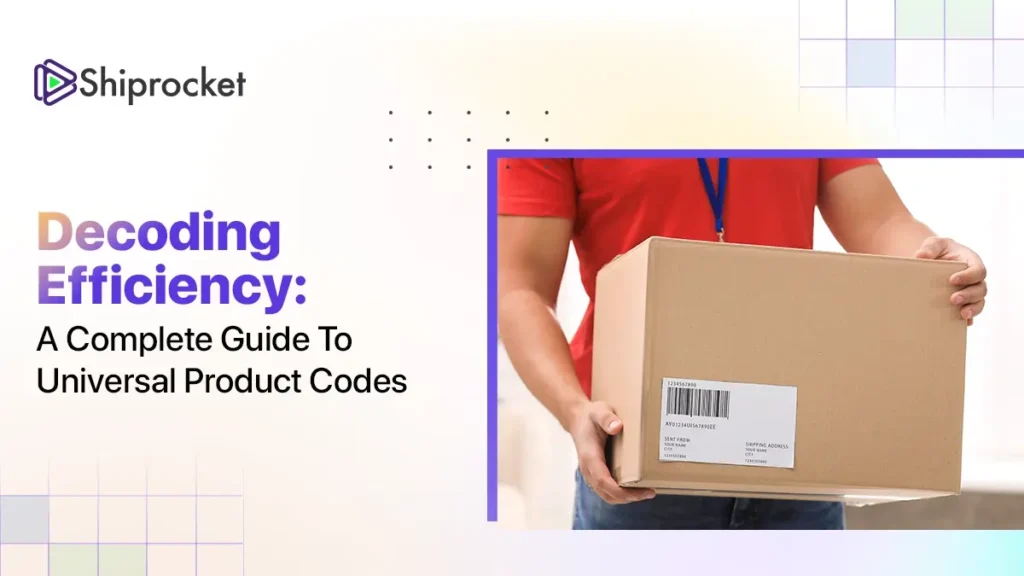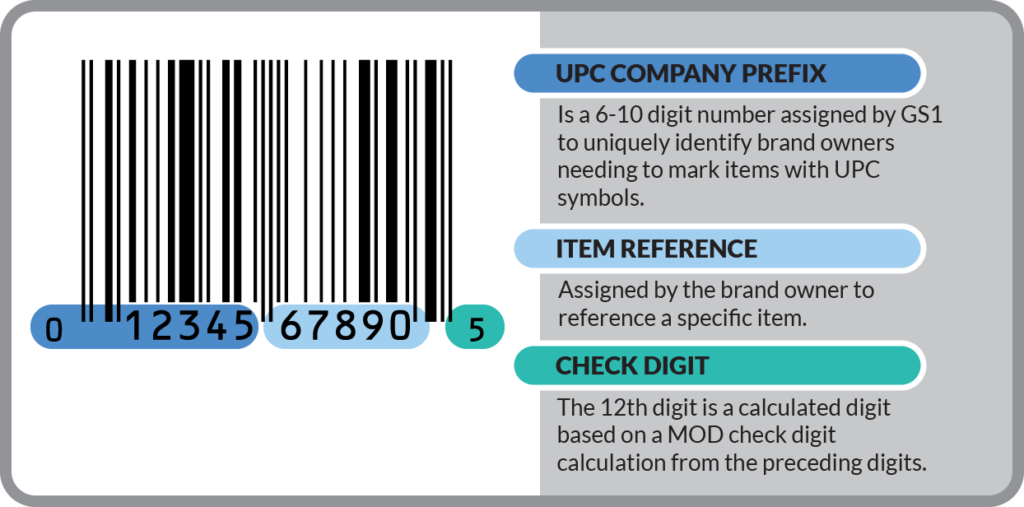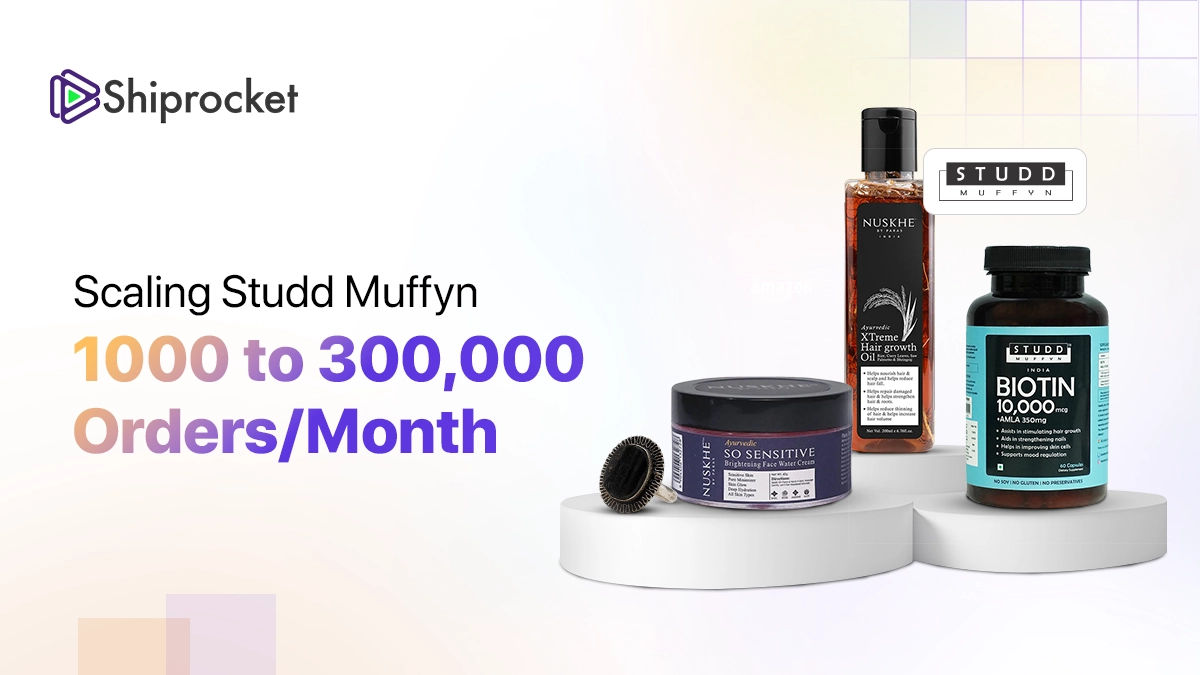Universal Product Code: Types, Components, Roles, & Cost
We’ve been hearing for centuries that “organisation is key.” Hence, every single successful business focuses largely on methodical workflows and proper organisation. A good business is well-organised and this only comes through good methods of organising. Understanding where things are and how you will gain access to them as quickly as possible will help you determine your efficiency.
Most businesses often create unique sequence codes or SKUs to differentiate between products. This works when sales are conducted in a small-scale capacity. How will you manage this when you scale up and start selling through multiple channels and locations? If every business begins to create and use its labelling techniques, tracking and accessing will become more complicated and inefficient. Thus, universal product codes (UPCs) are employed.
UPCs create a standard method globally to identify, label, and distinguish the products. It alleviates the complexities that occur in cross-selling and collaborative selling. It moreover streamlines your inventory and warehouse management processes.
This article will tell you everything about Universal Product Code and their role in different areas of business.

About Universal Product Code
A globally accepted sequence of unique numbers that correspond to the barcode that is assigned to a specific product is known as a Universal Product Code (UPC). When a barcode is scanned, it reveals important details about the product like the brand name, price, size, and other relevant data.
The UPC allows manufacturers and retailers to precisely track products in their inventory. A well-defined UPC with its batch lot enables any company to recall its damaged items or sold items easily. The UPCs are used by all warehouse tracking systems and point-of-sales systems to always have a record of all items. The idea of UPC is that it stays constant irrespective of who sells the product and where it was sold.

Types of UPC and Their Significance
Here are the three types of UPC barcodes you might come across:
- UPC-A: This type of UPC barcode is a standard one that is used in POS retail transactions. A series of 12 digits make a UPC-A barcode. It works on encoding data that is also known as Global Trade Item Number or GTIN 12.
- UPC-E: This is the other type of UPC barcode. Compared to UPC-A, this barcode consists of 8 digits only. It’s because this barcode is mostly used when there is not enough space to use the UPC-A code. It also works on encoded GTIN-12 data and you can find them on smaller retail items. For instance, cosmetics, cigarettes, etc.
- EAN-13: European Article Number, it is a 13-digit barcode commonly used for retail products. The first two or three digits represent the country code, followed by the manufacturer code and product code.

Components of UPC

Any UPC can consist of up to 12 digits. These are unique to every product and they always have three major components. These include:
- Manufacturer identification number: The primary component of UPC is the manufacturer identification number. It comprises the first six or nine digits of the UPC. GS1 which is a non-profit organisation, assigns these unique six or nine-digit prefixes to every business and this helps in the identification of the rights to the intellectual property of that product. It tells us that when two products are made by the same business, they would have UPCs that contain the same first six or nine numbers. Did you know more than 2 million companies use GS1 barcodes in over 1 billion products?
- Item number: The next five digits are the item number of the product. It is unique to every product and its variations. For instance, a blue curtain would have a different item number when compared to the item number of a red curtain having the same design.
- Check digit: The final digit of the UPC sequence is known as the check digit. It validates and approves the UPC in your management software. The check digit is the sum of all the previous digits and it ensures that no other UPC is the same. This digit is needed for the barcode to scan correctly and present the item details for the right product.
Role of UPC in Trade
UPCs were created and deployed worldwide in 1973. These unique numbers have revolutionised how brands go about their work processes. Here are some ways in which UPCs play a crucial role in trade:
- Efficient transactions: Prior to the invention of scanners and barcodes, manual entry had to be done in physical stores to retrieve the price of an item. This process is very time-consuming and it is prone to errors as well. With UPCs, a quick scan is all that is needed to pull up the entire history behind the product. It makes all the processes quick, easy, and efficient.
- Hasten the order fulfillment process: UPC barcodes do not come in handy only when you checkout or bill a product. They can be used to make the warehouse processes easier thereby quickening the order fulfillment process.
- Betterment of the picking and packing precision: UPCs not only complete orders more quickly but they also minimise errors and make the process more accurate. Staff in warehouses can simply scan the code and double-check if they are picking the right items. It thus minimises errors and completes the order process on time, thereby enhancing order accuracy.
- Improvement of tracking inventory movements: UPC barcode scanning is often synchronised with the inventory and warehouse management systems. When UPC is scanned, the inventory system will easily capture the data and record what happened to it. This quickens the process through the SCM while giving real-time data on inventory levels without the need for physical counts.
How to Generate UPC Codes for Your Products?
Getting a UPC barcode might be simpler than you think. You’ll have to apply for a UPC through GS1. It’s because GS1 will ensure no two products have the same UPC. Here’s how you can apply for UPCs with GS1:
- Go to the GS1 barcode application website
- Enter your business email or PAN to register
- Click on ‘Get a Barcode’
- Enter an estimated number of UPCs you’ll need. It will depend on the number of products you have.
- Then, scroll to the bottom of the application page and click on ‘Get a GTIN’ if you have one or a bunch of products.
- Click on ‘Get a GS1 company prefix’ if you want to get barcodes for various products at the same time.
- Lastly, enter your contact details and pay
When you find barcodes beginning with ‘890’, it indicates India as the country of origin.
Industry-Specific Applications of UPC
UPCs are used in all industries and they have a role that is quite flexible. Here are its industry-specific applications:
- Healthcare: A global healthcare company called Fresenius Kabi used UPCs to enhance their product labels. It was used in its entire portfolio of over 700 products. It was an imprint move as the company needed to make way for greater amounts of important data for a wide assortment of items in small packaging. The company was capable of leveraging UPCs to store all their vital information including dose and expiry dates. This enables physicians to quickly validate the necessary parameters of the medication.
- eCommerce: Another well-known brand called Earthley sells 100% organic products. They have over a few dozen products. With the selling of this many different products, they decided to deploy the UPC method to complete their warehouse operations and avoid confusion. Upon deployment, they realised that they gained greater visibility and clarity in their warehouse processes.
- Restaurant Franchises: The popular franchise restaurant known as Subway had major trouble with its weekly inventory calculations. Manual processes only led to major concussions and discrepancies. After using GS1 Standards UPCs for inventory management, they were able to complete the process more easily and within minutes. The barcodes of UPCs also allow them to streamline their distribution centers’ processes such that they can conduct stock rotations more easily.
Buying UPC Codes: How Much Does it Cost?
Buying UPCs isn’t free. The cost of getting UPCs for your products will depend on several factors – annual sales turnover, number of barcodes, and the year. You can calculate the fees while registering for barcodes on the GS1 website. The registration fees consist of the following:
- One-time registration fees
- Subscription fees (you can download the subscription fee structure for barcodes by clicking on this link)
- Security deposit
- Taxes
| UPC Code Type | Cost | Benefits |
|---|---|---|
| UPC-A | Costs vary based on providers, typically ranging from INR 100 to INR 500 per code | Widely recognized, compatible with global retail, and suitable for various product types |
| UPC-E | Pricing details may differ, and it’s recommended to check with providers like IndiaMART | Compact for small packaging, efficient use of space, and accepted in various retail scenarios |
| EAN-13 | Costs may vary, and it’s advisable to check with specific providers | Internationally recognized, versatile, and suitable for diverse product ranges |
Conclusion
Universal Product Codes (UPCs) are simply a string of unique numbers that allow you to track your items quicker and more accurately. These are standardised codes that are issued by the GS1 to enable you to always track your items irrespective of the location or medium of transportation. UPCs enable easy sales forecasting and allow you to calculate your inventory levels, thus making them an efficient tool for selling products. UPCs can be used in all industries as they are very versatile and helpful. They enhance all your SCM processes, thereby making order fulfillment quicker, more organised and reliable.
UPCs are broadly used externally by manufacturers to identify products at the point of sale. SKUs are for internal purposes and are used by retailers to track, manage, and streamline inventory. SKUs vary in length, with a combination of letters and numbers.
You’ll need a PAN card for your company or proprietorship firm, a copy of your balance sheet as proof of your annual sales, a letter on company letterhead requesting the allotment of barcodes, status proof of your company, and your company’s cancelled cheque.
It usually takes 7 to 10 working days once you have completed the registration, submitted the required documents, and paid the fees.
No, you can’t change the number of barcodes later. That’s why you should consider the total number of product SKUs or variants, and whether you’ll be adding more of these in the future. You’ll have to register again for more barcodes if you run out of barcodes allocated to your business.





